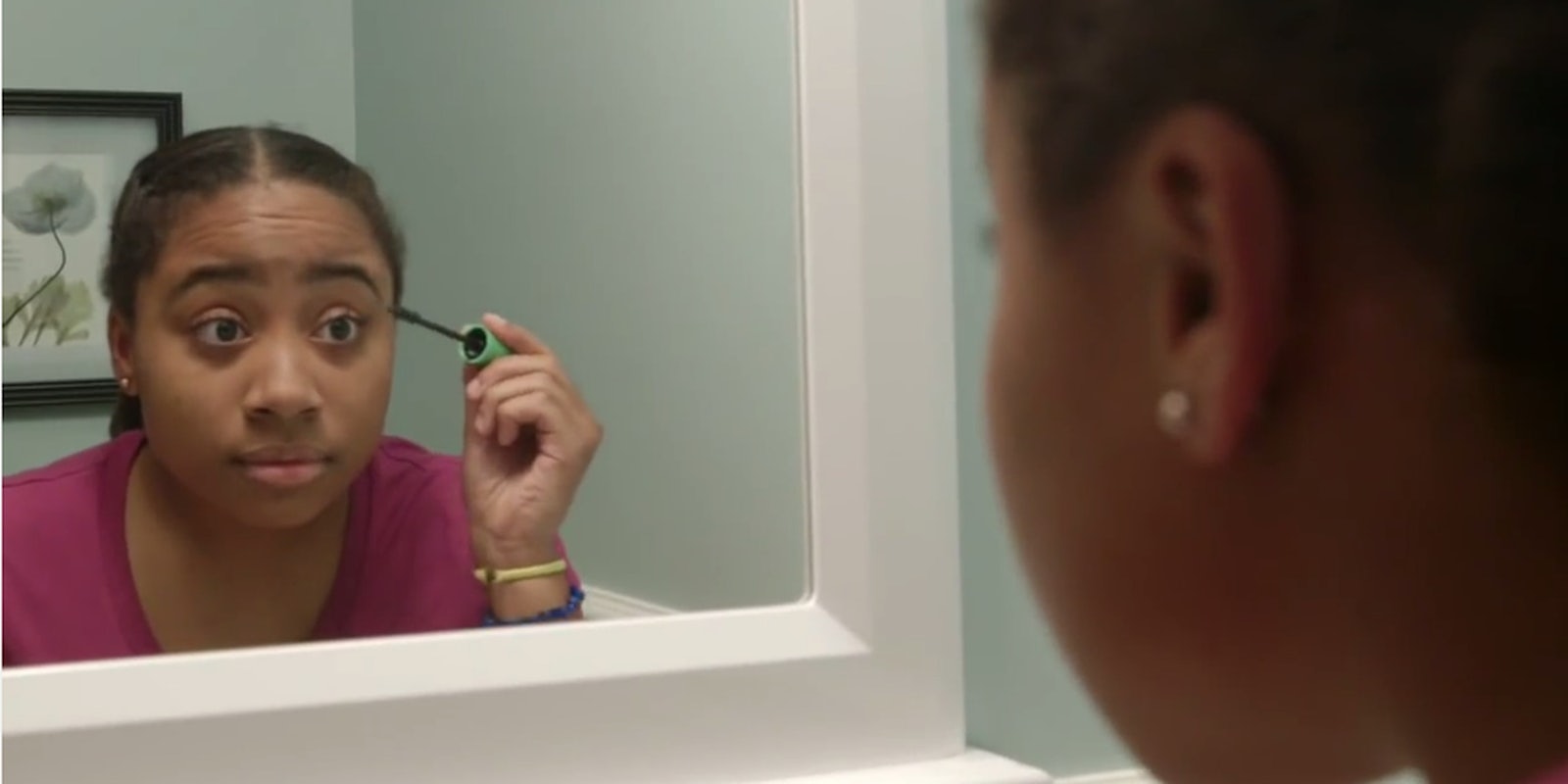“Beauty is being strong, and being brave, and being happy with yourself,” a teenage girl tells cameras, smiling proudly.
“Selfie,” Dove’s most recent advertising masterpiece, is designed to give viewers a fizzy emotional cocktail: liberation and hope and a feeling of subverting unfair social norms. “Selfie” ostensibly depicts how Dove teaches young women and their mothers how to take “natural beauty” selfies in an empowering way. On the surface, with the angelic and heart-crunchingly vulnerable teens and the tinkly music and the nice cinematography, it’s easy to get swept up in the emotion-baiting commercial (which was packaged as a short film and shown at Sundance, but make no mistake, it’s a commercial).
But take a closer look: Dove is owned by Unilever. Unilever employs a variety of advertising strategies to sell its products. For Dove it has milked the wildly successful “Real Beauty” campaign because it works and makes them a lot of money. Unilever, and Dove, have no deep-seated ideological commitment to this campaign. That’s why Axe, another line of products owned by Unilever, uses an advertising strategy that upholds and endorses the stereotypes Dove’s campaign purports to dismantle.
A lot has already been written on the “Real Beauty” campaign’s problems, but there’s something that particularly bothers me about this ad.
In addition to the “Selfie” video using an Oprah-fied message of female empowerment only as a means to an end of selling lady products, there’s a bigger problem with this video and its message of empowerment: Why would Dove’s advertising team be so arrogant to assume that teenage girls need to be told how to take selfies?
And look at the plot: as the commercial opens, a pretty girl inexplicably stands in a field taking selfies. She looks happy. If this were the end of the video, it might make more sense. However, the girl then introduces the segment’s conflict in a wistful voice-over: Her mother wants her to wear makeup. So what we have from the beginning is a teenager who already knows how to take a “natural beauty” selfie. But the video proceeds as though this isn’t already apparent, proceeding with a barrage of “normal” (read: conventionally attractive) teenage girls and their mothers talking about their flaws and insecurities.
Then Dove cuts to a school in Massachusetts. Through an awkwardly staged announcement, Dove calls all the female students to the gymnasium. A photographer tells them they have the power to redefine beauty through selfies. Dove, do you not remember the beginning of the video where the girl was happily taking no-makeup selfies? Why aren’t you calling the mothers and telling them to stop trying to pass their hangups about the inherent impermanence of physical beauty to the next generation?
Dove makes a gallery of “honest selfies” for the teens and their mothers and then encourages the people who come to the gallery to write nice things next to the selfies, thus reinforcing the idea that we need positive feedback to confirm our physical attractiveness. “Since we’ve had this experience together, I have realized she’s fine just the way she is,” says the mother of the teenage girl we met at the beginning of the video. That’s less of a message that Dove’s campaign is thoughtful and more of an indicator that this mom is a jerk.
This video’s narrative assumes that these girls were taking selfies wrong in the first place, and it is up to Dove to help them make their selfies more feminist. Have they met a teenage girl? Teenage girls are selfie masters. They are to selfies what Jiro Ono is to sushi. They’re not doing them wrong! They know how to take a selfie that makes them feel good. We are but cave-dwellers squinting at the reflection of their Platonic selfies.
And there’s already an organic, not-led-by-a-beauty-company “Ugly Selfie” trend where people—primarily young women—post unflattering pictures of themselves for fun. So young people are already taking selfies that subvert beauty standards. It’s people like grown-ass advertising executives that are obsessed with polished appearances.
The onslaught of photo-sharing apps like Instagram and Snapchat have given younger people a habit of taking selfies, yes, but it’s also given them a more casual relationship to their image in pictures. One photo can make a person look like they got beaten to death with an ugly stick. Another, with the right angle and filter, can make them look like a dime. This is something people like the girls in the commercial already know.
There are a few different takes on what the growing popularity of selfie-taking. Some people think it indicates a rise in narcissism and navel-gazing. Some people think it’s an empowering act (Slate called them a “tiny burst of girl pride”). Whether you think they’re a harbinger of the Bieber-led douchepocalypse or a symbol of flourishing self-expression (or, you know, that they’re just a manifestation of the all-too-human impulse to gaze on one’s own image and make one’s mark on the world and everyone should just press pause on assigning them great meaning), it’s clear that there is no context in which the idea that a company that peddles scented deodorant has some kind of authority when it comes to telling people what makes a selfie empowering or not.
This ad campaign has no real message, aside from, of course, to buy Dove products. It’s just packaged in a way to look like it does. What makes it such an insidious piece of marketing is that it tricks its audience into believing they’re consuming something that stands for something.
Dove doesn’t stand for real beauty. Dove stands for the products that it sells. And young people don’t need a lesson in challenging standards of beauty from a company that wants to keep them interested in purchasing beauty products.
Screenshot via Dove/YouTube
